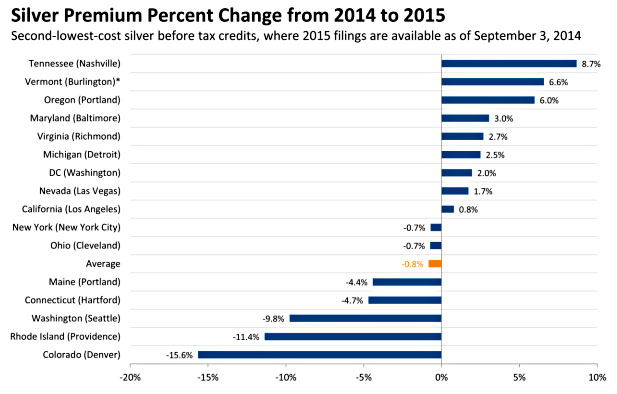Courtesy of the Kaiser Family Foundation, here’s a cheerier chart for this morning. It shows the projected premium increases under Obamacare, and it’s really pretty amazing. After years of double-digit increases, next year will bring an average decrease in premiums of 0.8 percent.
That’s genuinely stunning. It’s possible, of course, that the precise number might change as more states report on next year’s premiums, but the trend in the chart is pretty clear: a few small states show sizeable rate increases, but large states (or, more accurately, large cities) all show fairly small changes. It’s not surprising that small states are the ones that tend to show higher variation, but they’re also the ones that don’t affect the overall averages very much. So it seems likely that once all the states have reported in, the overall change in premium levels will be very close to zero.
Paul Krugman calls this part of Obamacare’s “life spiral.” In other words, it’s exactly the opposite of the dreaded death spiral that every conservative in the country has been banging the drum about for years. Basically, as good news accumulates, it breeds more good news. As Krugman puts it, success feeds success. And that’s true. The news about Obamacare has been almost uniformly positive for months. There are still plenty of small problems here and there—most of which could be solved if Republicans would allow it—and the refusal of so many red states to adopt Obamacare’s Medicaid expansion is truly a scandal. Nonetheless, it’s clear that Obamacare is basically a success. There’s nothing much that’s likely to change that now.


















